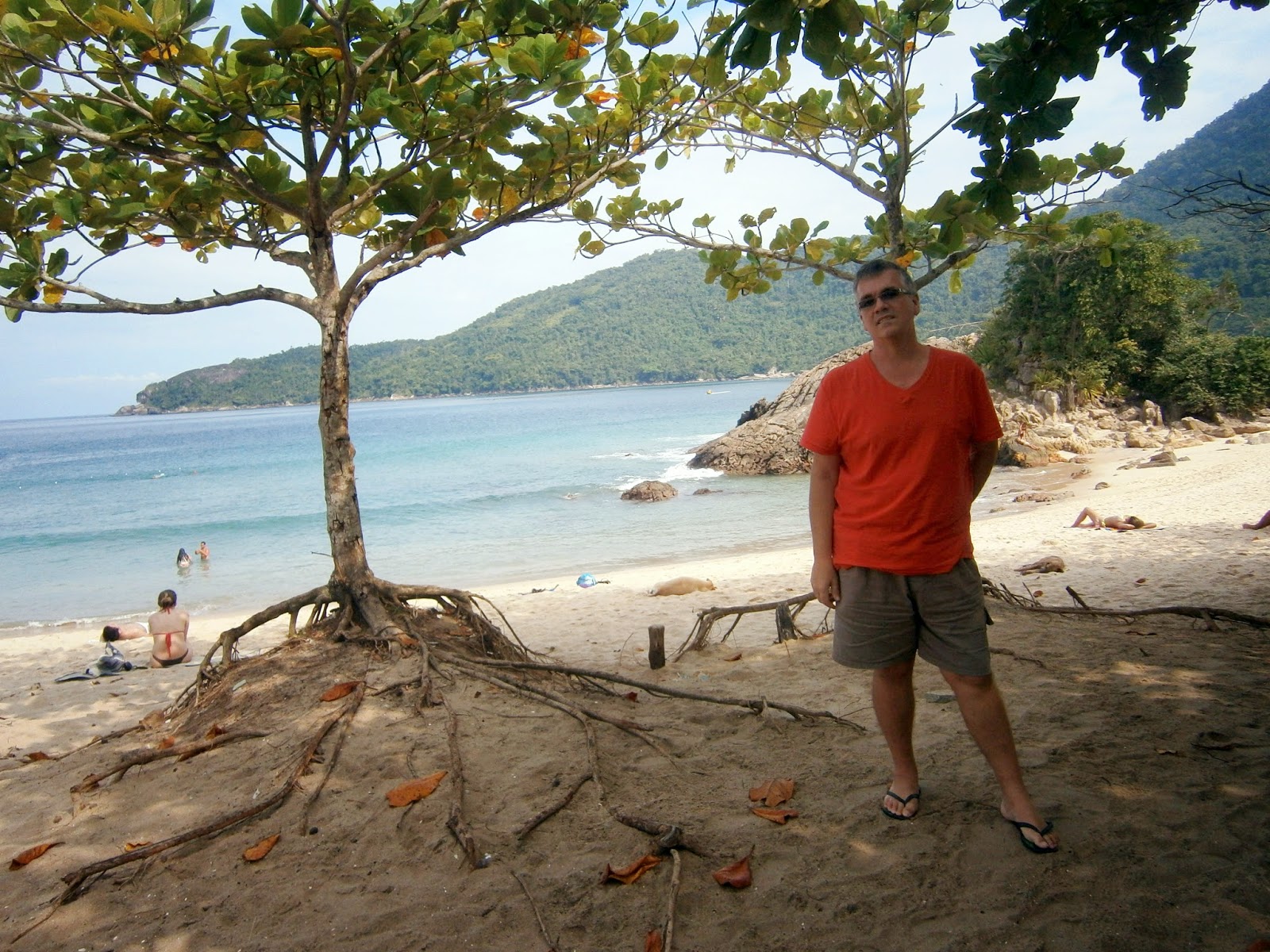 |
| The secret to traveling in Brazil is to get to these bars before they put in a floor, walls and air conditioning! |
Brazil is changing year after year. Some say for the better;
some say otherwise. As travelers throughout Brazil, Luiz and I have seen a lot
of “evolution” at the natural places we love to visit. What I have witnessed
over the past 15 years, in terms of the development of previously rural or
sparsely populated coastal areas, is a fraction of the changes Luiz has seen
since his early adventures as a teenager. He and his friends were frequent
campers on beaches and in tiny towns long before comfortable pousadas appeared
on the scene.
 |
| Sorry Cabo Frio. Not my favorite beachfront view. |
Sometimes the “progress” is stark and ugly. I think it is
safe to say that Cabo Frio is a fail, having lurched blindly into the fast lane
of tourism development. While the beach has stayed clean and the water remains
spectacularly clear and crystal blue, you need only look behind you to the
burgeoning little city and its wincingly soulless, crowded and chaotic beach-town
tourist lowest-common-denominator “development.” Hint: if you want to visit the
beautiful sea near Cabo Frio (without doing the whole European upscale thing of
Buzios) set your sights on neighboring Arraial do Cabo.
 |
| Arraial do Cabo: still a small town - with lots of beaches, and just a cab ride from Cabo Frio. |
This post, however, is meant to focus on the success story (so
far) that is Trindade.
Luiz and I have been to Trindade in the past. You can learn
more about our first visit (and see photos of a very fat Jim) here. At that
time we enjoyed a small coastal hippie town that was slowly morphing before
everyone’s eyes into a burgeoning (on a tiny scale) coastal getaway for the
Paulistas escaping their urban zoo for a weekend. We felt lucky to have been
there before it was totally overrun.
During our first visit to Trindade we loved the fact that
the tiny, winding access road that enters the village literally traverses a
stone waterfall/spillway where the forest meets the sea. No bridge, just a
shallow stream of water easily driven through. This bit remains exactly the
same.
 |
| That wonderful lunch from years ago. |
It was our birthdays when we first visited (as it was,
again, this second time around) and we ate a spectacularly generous and
delicious seafood pasta in a clay pot lunch at a beachside restaurant. I remember
thinking at the time that the restaurant was clearly a “temporary-turned
permanent” type of structure plopped down on the sand just out of reach of the
tide. It was convenient and had great views/ambiance, but it was also an
eyesore on an otherwise pristine tiny beach in a natural area. There were
several such invasive restaurants lining the shore.
This past May we revisited Trindade on a day trip down from a
beach house retreat just outside of Angra dos Reis. It was our birthdays and we
were spending a long week touching base with some of our favorite local gems:
Ilha Grande, Paraty, Angra do Reis and Trindade.
I had my heart set on a return visit to the restaurant for
that amazing seafood pasta.
Imagine my surprise (and heartwarming delight) when we hiked
out to the little beach and found it totally bare of any built structures.
None. Nothing. Just a woman selling cold beverages from a cooler – and a
beautiful natural beach!
Could it be? Is it possible? Could IBAMA (the Brazilian
Institute of Environment and Renewable Natural Resources) actually be enforcing
environmental laws? Did IBAMA actually kick squatters (even delicious seafood
pasta making ones) off of environmentally sensitive national forest land?
According to the itinerant cold drinks saleswoman that is exactly what
happened.
 |
| No buildings... yay. |
 |
| I am standing where the restaurant used to be. |
Cue swelling music. Yay! Thank you IBAMA. Thank you Brazil.
Yay!!
The beach at Trindade (one of them, there are many) the way
it was 20 years ago! Go visit. Go see for yourself.
 |
| Looking up from the water - Luiz is where the restaurants used to be. There are small traces of cement floors still in the sand. |
Now if we could just put a limit on how many Paulistas can
override the place on a holiday weekend. But hey… I don’t blame them. It is a
beautiful place.
 |
| I love this shot of the bus stop at the edge of town. |
And speaking of beautiful getaways that remain natural - don't forget the Juatinga Ecological Reserve that is located along the coast between Trindade and Paraty. We have had some great times there too.











